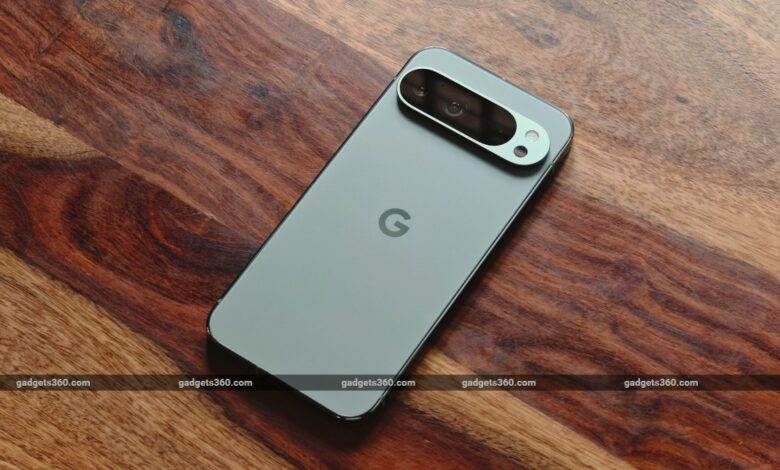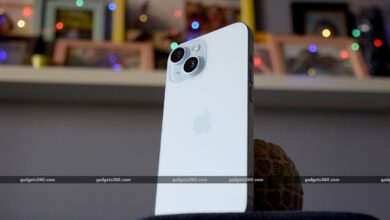Google Pixel 9 Pro XL First Impressions

When Google first showcased its Pixel’s AI capabilities, it started with some synthetic camera enhancements on the Pixel 7 Pro. This also included some Tensor G2-powered features such as Cinematic Blur. It then took things up several notches by introducing AI-enabled effects and the ability to “magically” remove people, objects, and more with the Pixel 8 Pro. With the Pixel 9 Pro series, we are now going above and beyond. One can not only modify but even create AI-generated content on the fly (generative AI). It’s not just to do with images, but everything from replies to messages, summarising emails and plenty more. AI moves from what was previously a background role to the forefront and makes its way into every app and space you can imagine.
Google needs better hardware to pull off some of these new on- and off-device AI tricks. Enter this year’s new slice of Google silicon called the Tensor G4. The new processor vastly improves the previous one’s ability to process AI tasks (more tokens, the merrier), but not so much regarding raw power. We also have 16GB of RAM and plenty of storage (256 or 512GB in India).
![]()
The Google Pixel 9 Pro XL manages to squeeze in a slightly larger display than the Pixel 8 Pro
Continuing with the AI trend, we have plenty of new features. Apart from being omnipresent across the phone’s UI and even your desktop/laptop Chrome browser (provided you have Google’s Gemini Advanced plan), Google’s Gemini AI model allows for new features like Add Me (you can add the photographer to the photo), Zoom Enhance (zoom in an enhance crops of your photos) and a more powerful Magic Editor that can change the entire setting of your photo.
A powerful Gemini Live voice assistant also gets tasks done or suggests solutions through live conversations. And finally, Gemini has gotten smart enough for you to replace it with your trusty Google Assistant. A new Pixel Screenshots app claims to handle and remember what’s in your screenshots folder. The all-new Pixel Studio is an AI image generation tool packaged in a separate app. There’s also Car Crash Detection, which contacts emergency services in the event of an accident.
![]()
The Google Pixel 9 Pro XL has an ultra-wideband chip
AI bits aside, there are improvements on the hardware front as well.
The biggest one has to be the existence of the Pixel 9 Pro XL model. Side-by-side, it still feels as big as a Pixel 7/8 Pro, but Google’s engineers somehow managed to fit in a slightly bigger, 6.8-inch LTPO OLED display in the same footprint.
The camera setup remains fairly similar to the Pixel 8 Pro this phone replaces. There’s a 50-megapixel primary camera, a 48-megapixel periscope camera (5X optical zoom) and a slightly improved 48-megapixel ultra-wide camera this year. The selfie camera has gotten the biggest upgrade in years, with a 42-megapixel camera, which also has autofocus (like the previous model).
The battery also grows by just a little. There’s a 5,060mAh battery versus the 5,050mAh battery in the Pixel 8 Pro. Charging speeds have improved significantly with the new phone offering 37W wired charging. Wireless charging has been upgraded to the faster Qi2 standard, but the Pixels don’t have the necessary magnets in the rear panel to grab onto the new magnetic Qi2 chargers for perfect worry-free alignment.
![]()
The Pixel 9 Pro XL’s rear cameras remain similar to the Pixel 8 Pro
Let’s not forget that brand-new design language. It feels refreshing even over last year’s Pixel 8 Pro models. The 9 Pro XL retains the rounded corners and the flat display of the Pixel 8 Pro but goes with flat sides with bevelled edges. This reminds me of Apple’s iPhone 15 Pro Max, but this frame has a mirror finish. The flattened visor-like camera module kind of reminds me of the old Huawei Nexus 6P (2015), but it’s laid on a flat rear panel. This makes the phone appear slim from afar, but you quickly lose that impression once you hold it. The camera module protrudes quite a bit, and for once, it doesn’t have a chrome finish, which easily scratches the older models.
Google’s AI gamble depends on how much its customers are willing to use these features. The other side of this story also banks on the fact that Gemini Advanced AI features like Google Live and more are very expensive (Rs. 1,950 per month with a 2TB Google One plan). This means that not everyone will subscribe to a service they will not use after the one-year free trial ends. We have yet to hear how much Apple Intelligence will cost users.
With that said, in that first free year, it’s up to Google to provide a flawless and seamless AI service demo through its Pixel 9 smartphone lineup. This may or may not convince users when it comes to the usefulness of retaining Google’s bouquet of AI services and live the AI life.
The increasing price tags of Google’s Pixel lineup is another problem in itself. Google’s Pixel 9 Pro now starts at Rs. 1,09,999 while the Pixel 9 Pro XL, which we have for review, starts from Rs. 1,24,999, stacking it up against Samsung’s Galaxy S24+ and Galaxy S24 Ultra models, which offer superior hardware in some areas.
We will test out all these AI features and the usual smartphone features like camera performance, heating, battery life and more. So, we recommend you stay tuned for our detailed review and make an informed purchase, as last year’s Pixel 8 Pro was not too different from the previous year’s Pixel 7 Pro.




